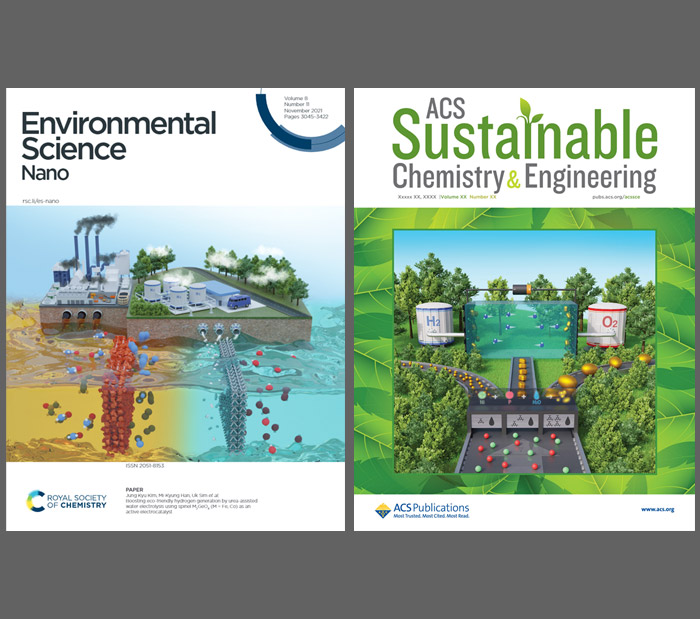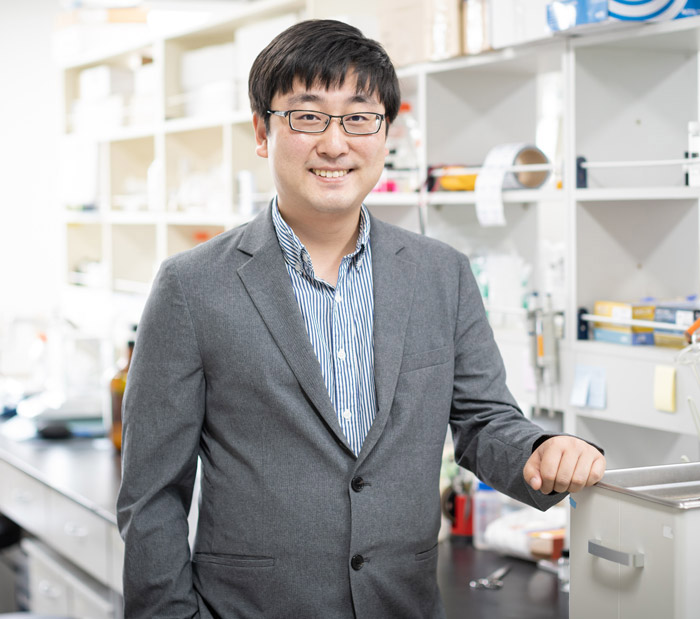Research Stories
Development of environmental friendly electrocatalysts for sustainable green hydrogen production
The research team developed environmental-friendly electrocatalysts for sustainable green hydrogen production.
Chemical Engineering
Prof.
KIM, JUNG KYU
Prof. Jung Kyu Kim (School of Chemical Engineering, SKKU) reported his collaboration research achievements with Prof. Uk Sim (Department of Materials Science & Engineering, Chonnam National University) and NILL Inc. : development of environmental friendly electrocatalysts for sustainable green hydrogen production.
First, bimetallic oxides with spinel structures, M2GeO4 (M = Fe, Co), were synthesized via a facile one-pot hydrothermal method and were used as electrocatalysts for urea-assisted water electrolysis to enhance the efficiency of hydrogen production. In alkaline electrolyte with urea, Fe2GeO4, which was used as the anode in the electrolysis cell, reduced the overall input potential to produce H2. The superior performance of Fe2GeO4 in the urea-added water electrolysis was attributed to the higher oxidation state of its metal cations, larger electrochemical active surface area, and lower charge transfer resistance than those of Co2GeO4. Hence, Fe2GeO4 showed 5.49 times higher H2 peak intensity than Co2GeO4, indicating higher efficiency of H2 production.
Second, single-phase metal-rich nickel phosphide (Ni12P5)-incorporated carbon composites were designed for a highly efficient water-splitting system. The distinct Ni12P5 is anchored in nitrogen (N)- and phosphorus (P)-rich carbon matrices (Ni12P5@N,P-C); the creation of the matrices entails a facile hydrothermal-followed pyrolysis treatment to explore their bifunctional activities in the water-splitting system. The Ni12P5@N,P-C composite-based two-electrode water-splitting system shows a low operating potential of 1.57 V at 10 mA cm–2 and achieves the commercially required high current density of 500 mA cm–2 at a stable potential of 2 V.
The functionalization of composite electrocatalysts based on strategical engineering and the intrusion of multiple active sites can help develop enhanced electrochemical energy systems.
These two research achievements were selected as the front cover art of journals ‘Environmental Science: Nano (DOI: 10.1039/D1EN00529D)’ and ‘ACS Sustainable Chemistry & Engineering (DOI: 10.1021/acssuschemeng.1c06514)’, respectively.
*Paper 1: Boosting eco-friendly hydrogen generation by urea-assisted water electrolysis using M2GeO4 (M = Fe, Co) as an active electrocatalyst (저널: Environmental Science: Nano, DOI: 10.1039/D1EN00529D)
*Paper 2: Anchoring of Ni12P5 Microbricks in Nitrogen- and Phosphorus-Enriched Carbon Frameworks: Engineering Bifunctional Active Sites for Efficient Water-Splitting Systems (저널: ACS Sustainable Chemistry & Engineering, DOI: 10.1021/acssuschemeng.1c06514)


